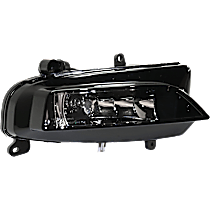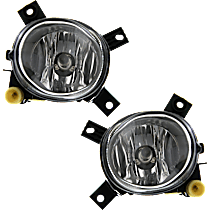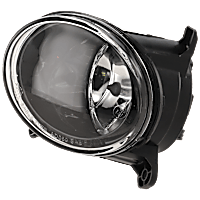{
"lazyNodes": false,
"abFitnotesFlag": false,
"abCrawlReviews": false,
"productOptionsCookie": false,
"orderDelayFlag": false,
"skipSessionCookie": false,
"covidMessage": false,
"fullTitleCookie": false,
"nrLoggerCookie": false,
"checkoutReviewCookie": false,
"productOptionSeqCookie": false,
"maintenanceFlag": false,
"bufferETACookie": false,
"multiShippingDiscountFlag": false,
"newFitmentFlag": false,
"surveyOptInFlag": false,
"crossSellFlag": false,
"skuMappingFlag": false,
"paySplitCookie": false,
"callDisableFlag": false,
"zipPaymentFlag": "u",
"hassleFreeReturn": false,
"lifetimeReplacement": false,
"cpn_off": false
}Audi A4 Fog Lights
Shop Catalog
![]() WARNING: This product can expose you to chemicals including Chromium, which is known to the State of California to cause cancer and birth defects or other reproductive harm. For more information go to www.P65Warnings.ca.gov.
WARNING: This product can expose you to chemicals including Chromium, which is known to the State of California to cause cancer and birth defects or other reproductive harm. For more information go to www.P65Warnings.ca.gov.
![]() WARNING: This product can expose you to chemicals including Chromium, which is known to the State of California to cause cancer and birth defects or other reproductive harm. For more information go to www.P65Warnings.ca.gov.
WARNING: This product can expose you to chemicals including Chromium, which is known to the State of California to cause cancer and birth defects or other reproductive harm. For more information go to www.P65Warnings.ca.gov.
![]() WARNING: This product can expose you to chemicals including Chromium, which is known to the State of California to cause cancer and birth defects or other reproductive harm. For more information go to www.P65Warnings.ca.gov.
WARNING: This product can expose you to chemicals including Chromium, which is known to the State of California to cause cancer and birth defects or other reproductive harm. For more information go to www.P65Warnings.ca.gov.
![]() WARNING: This product can expose you to chemicals including Chromium, which is known to the State of California to cause cancer and birth defects or other reproductive harm. For more information go to www.P65Warnings.ca.gov.
WARNING: This product can expose you to chemicals including Chromium, which is known to the State of California to cause cancer and birth defects or other reproductive harm. For more information go to www.P65Warnings.ca.gov.
![]() WARNING: This product can expose you to chemicals including Chromium, which is known to the State of California to cause cancer and birth defects or other reproductive harm. For more information go to www.P65Warnings.ca.gov.
WARNING: This product can expose you to chemicals including Chromium, which is known to the State of California to cause cancer and birth defects or other reproductive harm. For more information go to www.P65Warnings.ca.gov.
![]() WARNING: This product can expose you to chemicals including Chromium, which is known to the State of California to cause cancer and birth defects or other reproductive harm. For more information go to www.P65Warnings.ca.gov.
WARNING: This product can expose you to chemicals including Chromium, which is known to the State of California to cause cancer and birth defects or other reproductive harm. For more information go to www.P65Warnings.ca.gov.
![]() WARNING: This product can expose you to chemicals including Chromium, which is known to the State of California to cause cancer and birth defects or other reproductive harm. For more information go to www.P65Warnings.ca.gov.
WARNING: This product can expose you to chemicals including Chromium, which is known to the State of California to cause cancer and birth defects or other reproductive harm. For more information go to www.P65Warnings.ca.gov.
![]() WARNING: This product can expose you to chemicals including Chromium, which is known to the State of California to cause cancer and birth defects or other reproductive harm. For more information go to www.P65Warnings.ca.gov.
WARNING: This product can expose you to chemicals including Chromium, which is known to the State of California to cause cancer and birth defects or other reproductive harm. For more information go to www.P65Warnings.ca.gov.
![]() WARNING: This product can expose you to chemicals including Chromium, which is known to the State of California to cause cancer and birth defects or other reproductive harm. For more information go to www.P65Warnings.ca.gov.
WARNING: This product can expose you to chemicals including Chromium, which is known to the State of California to cause cancer and birth defects or other reproductive harm. For more information go to www.P65Warnings.ca.gov.
![]() WARNING: This product can expose you to chemicals including Chromium, which is known to the State of California to cause cancer and birth defects or other reproductive harm. For more information go to www.P65Warnings.ca.gov.
WARNING: This product can expose you to chemicals including Chromium, which is known to the State of California to cause cancer and birth defects or other reproductive harm. For more information go to www.P65Warnings.ca.gov.
![]() WARNING: This product can expose you to chemicals including Chromium, Epichlorohydrin, Lead and lead compounds, Naphthalene, Toluene, which is known to the State of California to cause cancer and birth defects or other reproductive harm. For more information go to www.P65Warnings.ca.gov.
WARNING: This product can expose you to chemicals including Chromium, Epichlorohydrin, Lead and lead compounds, Naphthalene, Toluene, which is known to the State of California to cause cancer and birth defects or other reproductive harm. For more information go to www.P65Warnings.ca.gov.
![]() WARNING: This product can expose you to chemicals including Chromium, which is known to the State of California to cause cancer and birth defects or other reproductive harm. For more information go to www.P65Warnings.ca.gov.
WARNING: This product can expose you to chemicals including Chromium, which is known to the State of California to cause cancer and birth defects or other reproductive harm. For more information go to www.P65Warnings.ca.gov.
![]() WARNING: This product can expose you to chemicals including Chromium, which is known to the State of California to cause cancer and birth defects or other reproductive harm. For more information go to www.P65Warnings.ca.gov.
WARNING: This product can expose you to chemicals including Chromium, which is known to the State of California to cause cancer and birth defects or other reproductive harm. For more information go to www.P65Warnings.ca.gov.
![]() WARNING: This product can expose you to chemicals including Chromium, which is known to the State of California to cause cancer and birth defects or other reproductive harm. For more information go to www.P65Warnings.ca.gov.
WARNING: This product can expose you to chemicals including Chromium, which is known to the State of California to cause cancer and birth defects or other reproductive harm. For more information go to www.P65Warnings.ca.gov.
![]() WARNING: This product can expose you to chemicals including Chromium, Ethylbenzene, Lead and lead compounds, Toluene, which is known to the State of California to cause cancer and birth defects or other reproductive harm. For more information go to www.P65Warnings.ca.gov.
WARNING: This product can expose you to chemicals including Chromium, Ethylbenzene, Lead and lead compounds, Toluene, which is known to the State of California to cause cancer and birth defects or other reproductive harm. For more information go to www.P65Warnings.ca.gov.
Top Rated Products
Popular Products
Customer Guides
Two Troubleshooting Tips for your Audi A4 Fog Light
Just like any automotive lighting, your Audi A4's fog light is prone to damage-both internally and externally. You might be surprised to realize that your fog lights are not working at the time you need them the most. A blown fuse, a busted bulb, or a faulty switch or wiring could be the cause of this problem, but you're not really sure because something like that never happened before. Before you hit the road again, equip yourself with these simple tips on how to troubleshoot your Audi A4's fog light:
Fog lights are out.
If you're sure that the fog light bulbs are not causing this problem, you can test the flow of electricity to and from the fuse. To do this, you will need a voltmeter. Simply look for a bare metal, screw, or bolt near the fuse box of your car. Place the tip of the voltmeter's black wire to the metal part, and then place the tip of its red wire on the top end of the fuse. If you get a reading, then there is no problem with the electrical connection and the fuse. But if there's no reading, then there is a problem with a wiring on the fuse and the battery that needs to be checked or replaced. You can also check the fog light switch using the voltmeter, and follow the same method until you figure out what is causing the problem.
Fog lights won't turn off.
If your fog lights won't turn off, even if the ignition is already turned off and the battery is dead, then the problem could be caused by a defective fog light switch. You can use your trusty voltmeter to check the wirings of the switch and the switch itself. With the switch turned on, set the tip of the end of voltmeter's red wire to the "out" terminal of the switch. If you don't get a reading, then you are correct that the problem is caused by a faulty switch. You need to replace it immediately to get your fog lights back in proper working order.
Driving your Audi A4 when it's foggy at night is tolerable, as long as you have your trusty fog lights on. Unlike the headlights, fog lights produce the right amount of illumination that cuts through the fog, enabling you to see the road and the other cars clearly. However, just like any other automotive lights, the fog lights also wears out, especially when they are not properly maintained. Below are some quick tricks on how you can keep your Audi A4's fog light in good condition.
Clean the inside of the fog light lens.
More than washing the fog light lenses whenever you wash your car's body, cleaning up the insides of the lenses is also necessary. It is inevitable that fog and moisture would seep into the lenses and cause the lights to dim. To do this, you have to remove the fog grill covers and disassemble the fog light unit. Once the bulb is removed, you can use a clean tissue paper wrapped in a small stick to clean the inner side of each lens. You can leave the unit to dry in a place with high temperature so that the moisture can evaporate. Afterwards, you can put some silicone between the lens and the housing to protect it from moisture buildup.
Don't abuse the lights.
Switching the fog lights on and off does not only causes distraction to the other drivers, but also possible damage to the fog light assembly. Familiarize yourself with the front and rear fog lights of your car to know when to use them, and switch them off when the visibility improves or when there is no fog. This is to ensure that the bulbs are not being overused and that you are not violating any state laws on the proper use of fog lights.
Perform a visual inspection.
If you are about to use your fog lights, first, make sure that you have inspected its parts beforehand for any cracks or damages. A broken fog light may not operate properly, making you unable to see through fog. When the lights are out, check the fuse or switch for any damages. Replace the defective parts as soon as you've diagnosed the cause of the problem.
The purpose of your Audi A4 fog lights is to aid and enhance your vision when you're driving on cold snowy days or simply during the night. They provide high-beam illumination to let you see what lies on the road when the fog is too thick. But what happens when your fog lights encounter electrical problems? What will you do? In this case, you need to be ready to do some troubleshooting. Detecting the problems will help you determine the right solution to the following fog-light issues:
Fuse problems
When your fog lights start showing signs of failure, the first thing that you need to check is the fuse. The fuses responsible in making the fog lights work are fuses labeled 20 and 21. To check the condition of these fuses, you need the most important tool in diagnosing electrical problems-the ohmmeter. Find any metal, such as a bolt, near the fuse and place the tips of the ohmmeter on it. When the arrow in the tool moves, it means that the problem is between the fuse and the fog light assembly. But if the arrow does not move, it's the battery that you must inspect further.
Wire problems
Physical inspection may not be enough to see the real condition of the wire connections in your fog light assembly. You need to determine if electricity is flowing through these cables. To find out, you need the voltmeter. Place the end of the black wire to any metal in the lighting assembly. Then, place the red wire on the fog light terminal. If you're receiving a power reading, yet the fog lights are not lighting up, chances are you have a faulty wiring system. You need to check the wires for corrosion. Also, see to it that the wire connections are firmly attached. Loose connections can also result in fog light malfunction.
Switch problems
The switch in your fog light assembly controls the flow of electricity. When it's not functioning properly, there's a fat chance for your lights to malfunction. That's why it's also necessary to check the switch for problems. A voltmeter will tell you if the switch is defective or not. A voltage reading is a clear indication that the switch is good and that it's functioning properly; no reading at all means that your switch must be replaced.
Quality alone cannot guarantee the longevity of your Audi A4 fog lights. A thousand-dollar worth of premium fog light assembly can all go to waste if you do not know how to maintain it. To make it last, you need to give extra care and protection. Here are some tried-and-tested ways to clean, polish, and safeguard your fog lights:
Fix electrical problems ASAP.
Nothing is more important than ensuring the proper functioning of your fog lights. This can be done through periodic inspection of the essential parts in this lighting assembly. Replace or repair broken components immediately to prevent further damage.
Prevent corrosion.
Your fog light assembly is composed of metal components that are all prone to corrosion. Rust is not inevitable; you can combat it. By applying lubricants such as WD-40, you can keep your sockets and electrical wires rust free for a long time.
Clear your lens covers.
Don't throw your lenses right away because there's still a way to remove the cloudy haze from them. All you need to do is to wash them with soap and water. For best results, scrape off the hardened dirt using ultra-fine sandpaper. Remember to wet the sandpaper first before rubbing it to the lens. Scrub gently to prevent scratches.
Keep your fog lights polished.
A fog light polish is a chemical compound that provides your lighting fixtures excellent shine and keeps them looking clean and fresh. It also offers extra protection, enhancing the water-resisting property of the fog light lenses. Apply this product using a microfiber cloth to buff the glass or plastic lens.
Aim your fog lights accurately.
If your fog lights are not installed or adjusted the right way, they will not be as reliable as they should be. To achieve proper illumination, you must know how to aim your fog lights. As a rule of thumb, the light beam of the fog lights should be pointing straight forward. They should rest below the beams of your vehicle's headlights. If you are not so familiar with lighting set ups, it's best to seek help from a mechanic or technician.


























